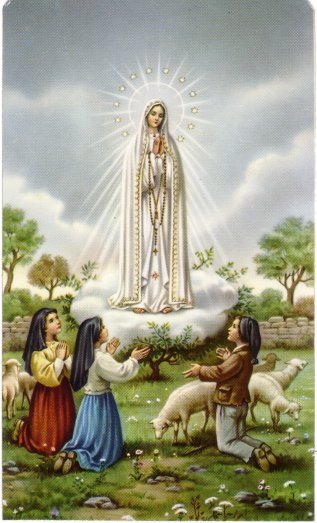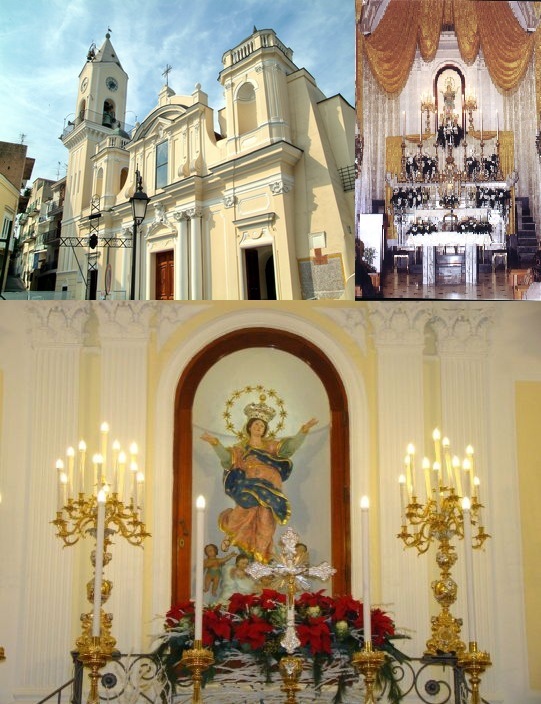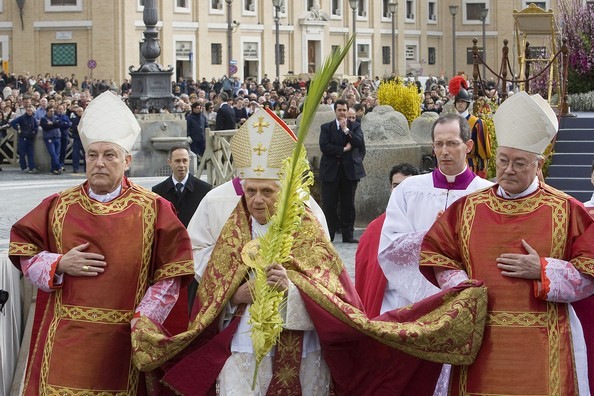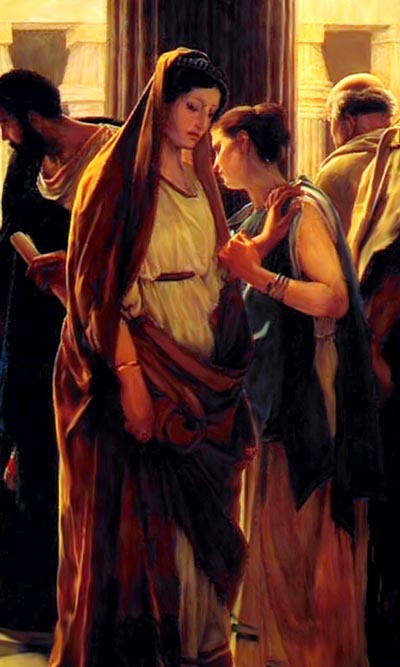Monte di Procida is a small comune (municipality) in the Province of Naples in the Italian region of Campania, located about 15 km west of Naples, facing the island of Procida. Monte di Procida includes the small island of San Martino, which was occupied by the Germans during World War II. Here they maintained a lookout post on the "Torre" that faced out to sea and provides great views of all nautical activity; ammunition was also stored there. It is located on the small bay of Baia dei Porci and Acquamorta. The patron saint of Monte Di Procida is Our Lady of Assumption. The Assunta celebration is one of the most profound but less known traditions in the phlegreian land. But how is it born the devotion for the Madonna Assunta (the Virgin of Assumption)? What the roots of a tradition which mixes, as so often happens, sacred and profane, popular beliefs and religious precepts?A fascinating story, which mirrors the history itself of the birth and the growth of the city from the first nomad groups of peasants coming from the isle of Procida, who came to establish on the cliffs straight down to the sea of the Monte, in seventeenth century, to the present days. And in more than four centuries of history, the Assunta never stopped being worshipped. When the first colonists coming from Procida started to settle down in the lands owned by cardinal Filomarino, to work in the fields, vineyards and vegetables were verdant through the whole headland and the Virgin’s patronage was yet invoked as to she granted a huge harvest. Then the inhabitants of Monte bounded for the sea routes, and to the Virgin they made vows at every crossing, as she watched over the sea and the destiny of those who sailed challenging the waves for fishing or commerce. The navy of Monte di Procida became, soon, one of the best in the “land of fire” and the devotion even deeper than before. To participate to the celebration, over all for those who were far away, represented a most important event: to miss it was considered more serious than not being home at Christmas or Easter.
And when so many people were obliged to emigrate “a’ Maronn” followed them. And they rewarded Her with a devotion profound and full of nostalgia for the native land so far, of which the Assunta represented an unforgettable “piece”, to the point that they organized a “Festa d’a Madonna” even in the United States at the Church of Sacred Hearts - St. Stephen, with the same statue, a perfect copy of the Assunta by Verzella kept in the parish church in the central square, if it was completely impossible to come home for the 15th of August to follow the procession, to be grateful for the fortunes granted and repay the vows fulfilled.
In 1814 the faithful, under the guide of vicar Michele Lomoriello and priests Francesco Di Abusco and Nicola Romeo Di Santillo and of canonical Andrea Iorio, commissioned a statue of the Virgin of Assumption for their church.
The governor of the church, Domenico Scotto di Santolo, ordered the statue to the neapolitan sculptor Francesco Verzella, paying 352 ducals, a very high price for that period. And all the same the faith of people from Monte di Procida made the “miracle” and the statue of the famous sculptor, who will also be called in Vatican, was placed in the little church of the community. In this occasion, the church was further enlarged and in 1816 a cherry tree wooden niche and a silver crown trimmed with stars were bought.
In 1889, on the 75th anniversary from the building of the church, the statue of the Assunta was solemnly crowned, in an evocative ceremony from bishop Gennaro De Vivo himself. On the head of the Verzella statue, the prelate put a precious gold crown given by the population.
 : is a famous title given to the Blessed Virgin Mary as she reportedly appeared in apparitions to three shepherd children at Fátima, Portugal. These occurred on the 13th day of six consecutive months in 1917, starting on May 13. The three children were Lúcia dos Santos and her cousins Jacinta and Francisco Marto.
: is a famous title given to the Blessed Virgin Mary as she reportedly appeared in apparitions to three shepherd children at Fátima, Portugal. These occurred on the 13th day of six consecutive months in 1917, starting on May 13. The three children were Lúcia dos Santos and her cousins Jacinta and Francisco Marto.

